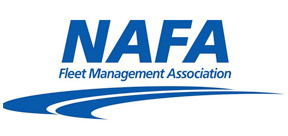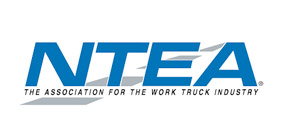Connecticut airport completes $2.5 million taxiway rehabilitation despite setbacks

“We are a small airport, but we’re very busy,” said Michael Safranek, administrator of the Danbury Municipal Airport. “It’s a challenging airport, it’s fun, and a lot of good flight training comes out of here. It’s probably about 65-70% of our operations.”
Located in the southwest corner of Connecticut, Danbury’s airport is considered a general aviation airport, meaning that it does not have scheduled commercial flights but rather caters to charter aviation as well as flight training. Located close to New York City, Danbury offers less expensive options for aircraft owners in the metropolitan area to store their planes as well.
Safranek estimated that the Danbury Municipal Airport is the fourth or fifth busiest general aviation airport in New England, an impressive feat for a city of 86,000 people.
Busy airports require careful maintenance, however, particularly when it comes to novice pilots. While creating Danbury’s Master Aviation Plan, a task that administrators at the airport complete every 10 to 15 years, Safranek explained that a large component of what the team looked at was reconstructing a taxiway that had begun to buckle and break. Frost heaving had also taken a toll on the pavement.
“The pavement itself was in deplorable shape. We saw-cut it and patched it internally as best we could, but at a certain point, it needs to be professionally redone,” he said. To do that, the airport undertook a $2.5 million project, completed this August. Ninety percent of the funding came from the federal level while the city fronted $213,108, with the state contributing the remainder.
The process hasn’t been easy. It began two-and-a-half years ago with a design and environmental analysis phase, during which the city worked with an engineering firm out of New Hampshire to redesign taxiway Charlie.
Standards change over the years, and the FAA’s newer requirements did not fit the older taxiway’s parameters, so they chose to do a rehabilitation rather than a complete reconstruction.

“The first phase we do is core samples; we make sure the subbase with core samples is secure enough to adhere to new pavement. If they’re not, then we have to rip up the underlay and put new trap rock and new subbase so that the pavement will adhere to it and it won’t be unstable through frost and things like that,” Safranek explained. The first phase came at a cost of $250,000.
After the scoping meeting, they hit a roadblock due to the subbase on either end of the 40-foot-wide taxiway. “So, we decided to decrease the width to 35 feet, that way the cracking at the edge was not as pronounced. The subbase is much stronger at the center: It’s more of a solidifying effect.”
Safranek surveyed the pilots who used the airport, and all agreed that the 5-foot decrease would make little difference. Two-and-a-half feet were taken from each side of the taxiway to keep the centerline the same.
Another setback came during the bidding stage, where the lowest bidder on the project gave Safranek an imbalanced bid – with quantity bids out of line with market prices – and he had to reject the bid at a cost of $240,000, “but the FAA agreed that if we gave them this bid, the project would have been a problem,” he said.
With the rejected bid and another construction company twice failing to create a proper job mix formula to pass the FAA’s rigid test phase, the project was put on hold until this past summer. Even then, it ran over deadline by about 33 days.
The final job mix asphalt came from Poughkeepsie, N.Y., and a company called Tilcon NY. A small section of the taxiway did not pass the FAA test phase but passed the less-rigorous production phase: While the FAA refused to pay for that section, Safranek and Hoyle Tanner have confidence in its performance and the engineering firm warrantied it.
“Sometimes these projects happen. Sometimes it goes really easy, sometimes it doesn’t.”
In terms of construction projects, Danbury’s $2.4 million taxiway is considered relatively small, and few companies have the desire to take on something wrapped in such strict regulations.
“What we were getting for that was 3,000 feet of pavement by 35-feet-wide, proper drainage, proper marking and new electrical. The electrical component of that was about $650,000, so that was a significant addition to the project.”
The electrical aspect included 107 new LED lights. The lights will save the airport money in the future, but at a purchase cost of $400 per light, they represented a starting increase of 400%. And instead of direct burial wiring, they chose the more expensive option of an underground conduit system, encased in concrete.
All this work will keep the taxiway in top shape for years to come. Safranek pointed out the life limit on infrastructure such as this and the importance of a solid subbase on surfaces that regularly handle heavy aircraft. The master plan addressed this need to ensure the safety of all who use the Danbury Municipal Airport.
Next Article: Clear that ‘check engine’ with CAS-provided scan tools and support



